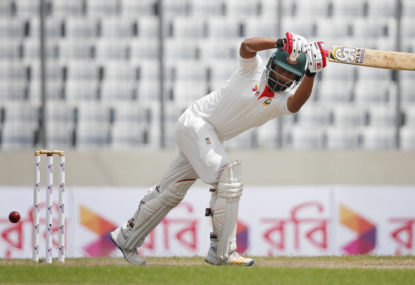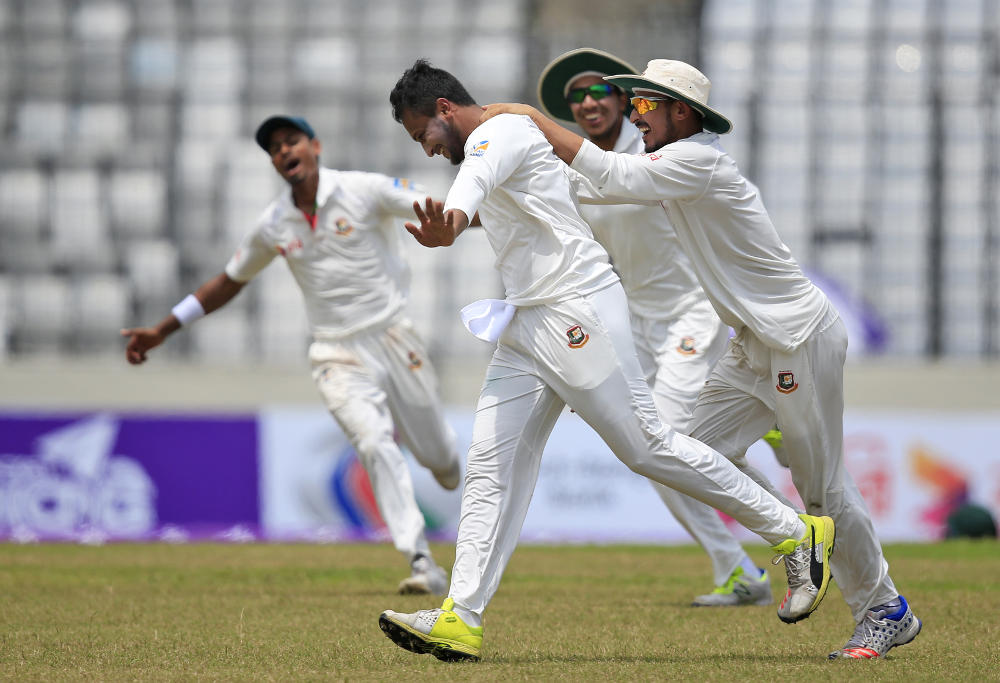Bairstow goes ballistic, clubs 45-ball ton to spearhead highest T20 run chase EVER
Johnny Bairstow has hit his way back into form with a 45-ball century as he steered his side to a record-breaking win, easily chasing…

The recently concluded three-match ODI series in the Caribbean islands saw the Tigers beat the hosts 2-1.
It should have been a whitewash for the tourists; at Guyana in the second match Bangladesh needed only 14 runs from the last two overs with six wickets in hand but still managed to lose by three runs.
Nevertheless, this victory comes as a welcome relief for the Tigers’ fans on the back of a disastrous Test series. Also, with less than a year remaining before the next World Cup, this series acted as a vital preparation for the Tigers.
So, it is important to look at the plus and minus points for the tourists.
The batting of opener Tamim Iqbal
A big plus point: with scores of 130*, 54 and 103, Tamim, the left-handed opener from Chittagong, emerged as the most consistent batsman in the series. He did take 160, 85 and 124 deliveries respectively in his three innings, but that should not undermine the value of his efforts.
In fact, it was a part of the team plan that he would try to bat until the very end, giving the opportunity to the batsmen at the other end to go for their shots. This may seem strange given his hit-or-miss approach of a few years ago.
But he has matured a lot in recent times and seems ready for his job for the next WC. In the series, the pressure on him was compounded due to the poor form of his opening partner Anamul Haque, but he didn’t allow this to affect his own performance.
He enjoyed a successful Champions Trophy in England last year and one expects more runs for him in the next English summer.
Ability to Take wickets at the right time
Bangladesh’s bowling attack doesn’t have any hostile fast bowlers or a mystery bowler like Kuldeep Yadav, but instead Bangladesh depends on a group of consistent accurate bowlers who can keep the opposition batting in check. Certainly, barring a few odd occasions the Windies’ batting struggled to break free against the Tiger attack.
One such occasion was the second match at Guyana when the local boy Shimron Hetmyer smashed 125 from just 93 deliveries, and along with another youngster Rovman Powell threatened to take the opposition bowling apart in the middle of the innings. They put on a century stand for the fifth wicket, but the Tigers’ bowler fought back well after breaking the partnership.
They ran through the lower order, and Hetmyer had to carry the fight on his own until he became the last man out; run out in the third delivery of the 50th over.

(AP Photo/A.M. Ahad)
Then in the third ODI Chris Gayle looked ominous in the early overs, but his dismissal for 73 saw the middle order collapsing and Powell’s late flurry only reduced the margin.
In the current Bangladesh side, Mashrafe Mortaza, Rubel Hossain and Mustafizur Rahman have emerged as the frontline seamers and barring injuries they are likely to feature regularly in the World Cup. Mashrafe took four wickets in the first ODI and seven overall to emphasize his importance to the team.
Rubel at times was expensive but he is mainly used as an attacking bowler. Mustafizur looked fit (finally) and seemed to enjoy his cricket again.
Mehedy Hasan Miraz, the off-spinner, was used here to open the bowling. The idea was to keep Gayle quiet; similar tactics worked well a few years back when Sohag Gazi was given the responsibility. Miraz bowled sensibly, but it’s unlikely that he would open the bowling in England.
Shakib Al Hasan, the all-rounder bowled accurately, although he didn’t pick that many wickets. Mahmudullah and Mossadek Hasan were the support bowlers whenever necessary.
Overall, the Bangladesh bowling resources looked adequate against a team like WI; whether they can restrict a more explosive batting line-up like England or India still remains a question that will only be answered in due time.
Shakib batting at No.3
This , andn experiment; and although it worked well, it may not continue. Shakib certainly took his chances, scoring 97, 56 and 37. With Tamim batting solidly at the other end, Shakib had the freedom to go for his shots.
However, it should be mentioned here that the number three is not the regular position for the charismatic all-rounder. Already, Minhajul Abedin Nannu has hinted that the selectors are considering recalling Mominul Haque, a Test match specialist to bat at the number three slot during the World Cup.
In that case, Shakib will come down the order in the line-up.
Anamul fails in the opening slot
12 years into his ODI career, Tamim is still waiting to find a consistent opening partner. In the eyes of many, (including myself) the Tamim-Anamul Haque combination can be the ideal one. There is right-left combination; and more importantly, Anamul has all the shots on the book.
Yet, his scores in this series were 0, 23 and 10. An average of 30 and SR of 70 don’t tell anything about his enormous talents. When he raced to 23 from 8 deliveries in the second ODI, we thought it might be his day.
Of course, we were wrong as soon he threw it away. His highest score in 7 ODIs this year is 35 and the selectors may as well look for other options.
The lower middle order
The Bangladesh lower middle order revolves around Sabbir Rahman, Mosaddek Hossain and Mehidy Miraz. While Miraz’s place in the side is cemented as a specialist off spinner, the other two are less confident about their futures.
Unfortunately, neither got enough opportunities in this series to show their batting skills. However, their inability to take the Tigers across the line in the close finish in the second match shouldn’t impress anyone. To complicate the matters, the Tigers’ skipper Mashrafe promoted himself to the number six slot in the third match and scored an effortless 36 from 25 balls.
Possible changes
Quite remarkably, Bangladesh went in to the three matches with the same XII a welcome sign of continuity. However, changes before the WC are likely.
If Mominul Haque returns for the WC, then one of Sabbir or Mosaddek will lose his place. The other possible change could occur in the opening slot with Anamul disappointing again. Soumya Sarkar’s recall prior to the T-20 series suggests that he is still in the radar of the selectors.